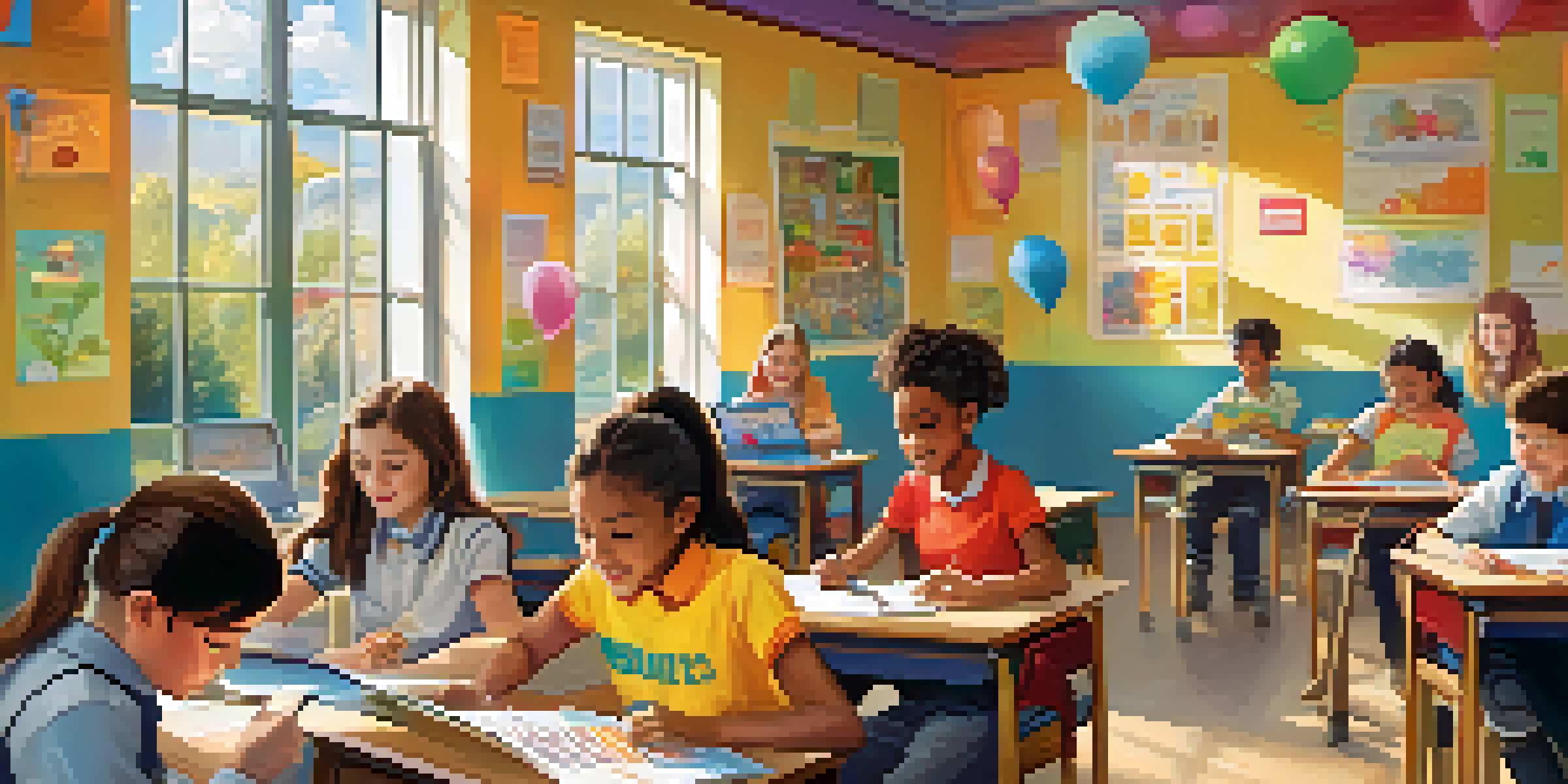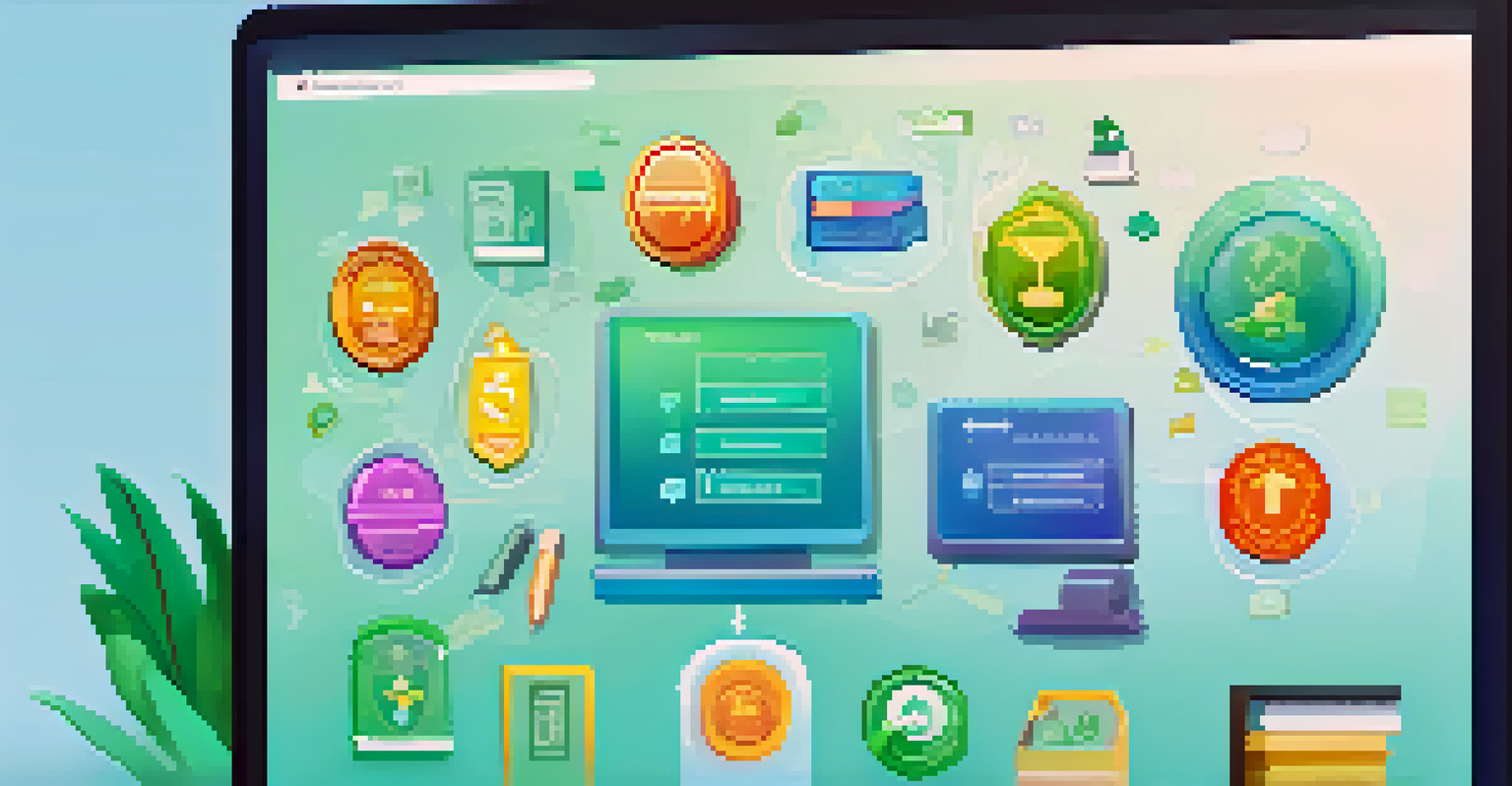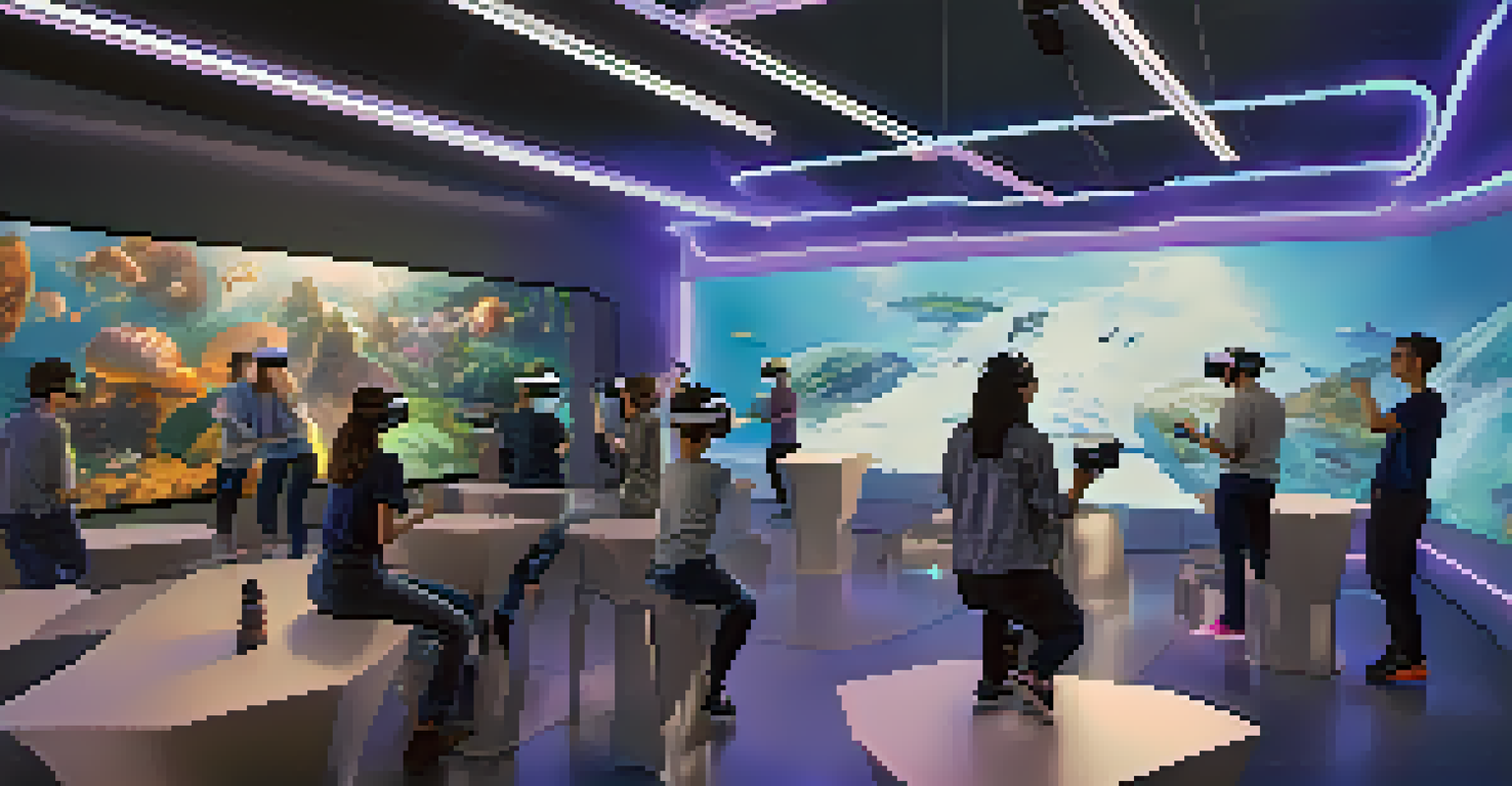Gamification and the Development of Growth Mindset in Students

Understanding Gamification and Its Importance
Gamification refers to the application of game-design elements in non-game contexts. In education, this means incorporating elements like points, badges, and challenges to make learning more engaging. By making education feel more like a game, students are often more motivated to participate.
In a growth mindset, challenges are exciting rather than threatening. So rather than thinking, 'Oh, I'm going to reveal my weaknesses,' you say, 'Wow, here's a chance to grow.'
This motivational boost is crucial, as it can significantly impact how students perceive their learning journey. Instead of viewing tasks as chores, they start to see them as opportunities for fun and achievement. This shift in perspective is a key element of fostering a growth mindset.
Moreover, gamification aligns well with the principles of a growth mindset, which emphasizes the belief that abilities can be developed through dedication and effort. When students engage in gamified learning, they are encouraged to take risks and embrace challenges, which are essential for growth.
The Concept of Growth Mindset Explained
A growth mindset is the belief that intelligence and abilities can be developed over time. This concept, popularized by psychologist Carol Dweck, contrasts with a fixed mindset, where individuals believe their talents are static. Understanding this difference is fundamental in education, as it influences how students approach learning.

When students adopt a growth mindset, they are more likely to persevere through difficulties and view failures as temporary setbacks. This resilience is crucial for academic and personal success. Encouraging a growth mindset can lead to improved motivation and performance in students.
Gamification Boosts Student Engagement
Incorporating game elements in education can transform learning into a fun and motivating experience for students.
Additionally, fostering a growth mindset equips students with the tools to tackle challenges in various aspects of life. It nurtures their ability to adapt, learn from mistakes, and ultimately thrive in an ever-changing world.
How Gamification Promotes Growth Mindset
Gamification encourages students to engage with content in a way that promotes learning through play. By incorporating challenges and rewards, students develop a willingness to experiment and learn from their experiences. This playful approach can lead to a deeper understanding of the material.
Gamification is not just about playing games; it's about bringing a playful approach to learning that fosters engagement and motivation.
Moreover, the instant feedback provided by gamified systems helps students recognize their progress. When they see their achievements visualized through points or levels, it reinforces the idea that effort leads to improvement. This dynamic creates a powerful loop of motivation and learning.
As students encounter challenges within the game-like environment, they begin to understand that persistence is key. This realization is at the heart of developing a growth mindset, as they learn that struggles can lead to success if they remain committed and engaged.
Examples of Gamified Learning Environments
Consider the use of platforms like Kahoot! or Classcraft, where students can participate in quizzes or challenges that make learning interactive. These platforms gamify the educational experience, turning traditional assessments into lively competitions. Such activities can spark enthusiasm and a desire to learn.
Another example is the use of badges in learning management systems, where students earn recognition for completing tasks or mastering skills. This visual acknowledgment not only motivates learners but also creates a sense of accomplishment, contributing to a growth mindset.
Growth Mindset Enhances Learning
A growth mindset encourages students to view challenges as opportunities for growth, leading to greater resilience and success.
These gamified elements create environments where students feel safe to explore and make mistakes. They can take risks without the fear of harsh consequences, allowing them to grow and learn in a supportive setting.
Challenges in Implementing Gamification
While gamification holds great potential, it is not without challenges. One common issue is ensuring that the game elements align with educational goals. If gamification is implemented poorly, it can distract from learning instead of enhancing it.
Another challenge is ensuring that all students feel included and able to participate. Not every student may thrive in a competitive environment, so it's vital to create a balanced experience that caters to different learning styles. This inclusivity helps maintain motivation and fosters a growth mindset for everyone.
Additionally, educators must be mindful of over-reliance on gamified elements. While they can boost engagement, they should not replace traditional teaching methods entirely. A blended approach often yields the best results, merging gamified experiences with foundational learning.
The Role of Educators in Gamification
Educators play a crucial role in the successful implementation of gamification. They must design experiences that are not only engaging but also educationally sound. This requires an understanding of both the content and the principles of gamification, ensuring that learning objectives are met.
Moreover, teachers should facilitate a supportive environment where students feel comfortable taking risks. By encouraging a culture of collaboration and learning from mistakes, educators can reinforce the growth mindset. This creates a safe space where students can thrive.
Educators Shape Gamified Experiences
Teachers play a vital role in designing gamified learning environments that foster collaboration and support students' growth.
Finally, ongoing assessment and feedback from educators help students reflect on their progress. This reflection is vital in cultivating a growth mindset, as it allows students to see their development and understand the value of effort in achieving their goals.
Future Prospects of Gamification in Education
As technology continues to evolve, the potential for gamification in education expands. Virtual and augmented reality, for instance, could create even more immersive learning experiences. These advancements could further engage students and facilitate deeper learning.
Furthermore, as educators embrace gamification, we may see a shift in how curricula are designed. Integrating game elements into various subjects could make learning more enjoyable and relevant for students, fostering a lifelong love of learning.

Ultimately, the future of gamification in education looks promising. By harnessing the power of play and creativity, we can encourage students to develop a growth mindset, setting them up for success both academically and personally.